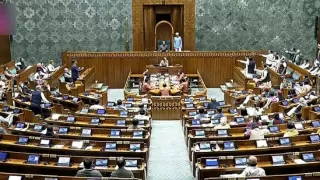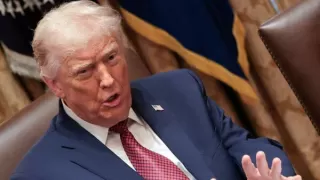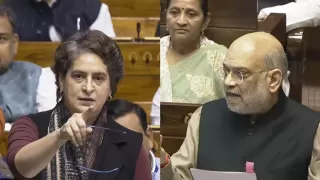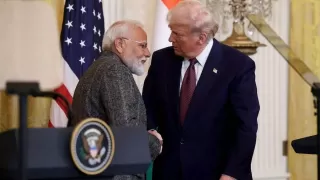The momentum at this year's UN climate summit in Brazil’s Belem city has turned sharply toward India, a nation whose fast-growing economy and rising emissions have placed it at the center of global climate diplomacy. As countries gather to decide the next phase of climate action, many are watching whether India—currently the world’s third-largest carbon emitter—will unveil its crucial new climate strategy. The expectations are high, and the scrutiny even higher, especially as global assessments rate India’s progress as “worryingly inadequate,” a description New Delhi firmly disputes.
Under the Paris Agreement, all member countries must submit updated Nationally Determined Contributions (NDCs) every five years. These plans are meant to demonstrate higher climate ambition and reflect each nation’s pathway toward reducing carbon emissions. With more than 120 countries already submitting their updated versions, the gap left by major emitters like India, China, and the EU has added complexity to an already delicate global negotiation. India’s stand-out delay has drawn intense attention, particularly at a moment when the world is struggling to limit global warming to 1.5°C and prevent irreversible climate consequences.
Despite global pressure, India has withheld its updated NDC3, stating it will only be submitted by the end of December. This stance has fueled debate over its climate responsibility, its dependence on coal, and its long-standing argument that developed nations must shoulder a larger share of the burden. As COP30 discussions intensify, India’s choices could influence the direction of future climate action and set the tone for global cooperation—or confrontation—in the years ahead.
India’s Missing Climate Plan and Its Global Implications
India’s decision to delay its updated climate roadmap has raised questions across the climate negotiation spectrum. As emissions continue to rise worldwide, the urgency for stronger commitments has become more pronounced. The United Nations Environment Programme (UNEP) warns that global emissions must decline by at least 35% by 2035 to stay on track for Paris Agreement goals, yet existing national plans collectively point to only a 12% reduction. This alarming discrepancy places immense pressure on major emitters, making India’s delayed submission particularly impactful.
The Paris Agreement emphasizes progressive ambition, urging nations to submit more ambitious reduction plans every five years. While countries like China have already submitted their updated pledges, India’s delay has left negotiators uncertain. The extended timeline offered earlier this year was meant to accommodate nations struggling to meet February’s initial deadline, yet India still withheld its new plan, fueling speculation around its internal policy debates and diplomatic strategy.
At the heart of global concerns is the fear that insufficient action from major emitters could push global warming toward catastrophic levels. UNEP estimates that current policies place the planet on a dangerous trajectory of nearly 2.8°C warming by the end of the century. India’s contribution to a revised global pathway is therefore considered essential, making the delay a focal point of COP30 discussions.
Why India Says the Responsibility Lies with Rich Nations
India’s reluctance to submit its updated NDC is heavily rooted in the principle of “climate justice” — the idea that developed nations hold historic responsibility for today’s warming and therefore must deliver stronger targets and far greater financial support. Officials in New Delhi have repeatedly emphasized that without adequate funding and technology transfer, ambitious climate action from the developing world becomes unrealistic.
In the lead-up to COP30, India’s environment minister argued that endless negotiations cannot replace actionable commitments from wealthy nations. He stressed that developed countries must accelerate their push to reach net zero far earlier, while also providing trillions—not billions—in concessional climate finance. This argument resonates with many developing nations frustrated by the stark contrast between promises of support and their limited realization.
A key point of contention is climate finance transparency. At previous COP summits, wealthy nations pledged increasing levels of financial assistance, yet developing countries argue that these figures lack clarity regarding private financing, loan burdens, and true concessional support. India maintains that its ambitions cannot be evaluated fairly without accounting for these financial gaps that impede sustainable growth.
India’s Achievements and Persistent Challenges
While global assessments highlight shortcomings in India’s climate actions, the country has achieved notable milestones. Most prominently, it reached its pledge of ensuring that 50% of its installed electricity capacity comes from non-fossil fuel sources years ahead of the 2030 deadline. This progress has been widely recognized and demonstrates India’s potential to lead the global south in climate transformation.
However, other indicators reveal deep-rooted challenges. Coal continues to dominate India’s energy mix, accounting for around 75% of total electricity generation. Reports from climate monitoring organizations warn that this figure must fall drastically—to at least 19%—to align with the 1.5°C global warming limit. The persistent dependence on coal has placed India among countries with the fastest-growing greenhouse gas emissions in recent years.
India’s standing in global climate performance indices has also slipped. Think tanks analyzing emissions, energy transitions, and policy efforts note that India has not yet outlined a formal coal phase-out plan, and new coal blocks continue to be auctioned. These practices have raised concerns among environmental groups, even as India emphasizes its right to development and energy security.
Geopolitical Pressure and the Future of India’s Climate Policy
The geopolitical context surrounding COP30 further intensifies the attention on India. With the United States withdrawing from the Paris Agreement once again, concerns emerged about whether other major emitters would step forward to close the gap. India, being a pivotal voice among developing countries, has faced heightened expectations to signal clarity during the summit.
As climate negotiations continue, debates extend beyond national targets. Countries are now discussing a global roadmap for phasing out fossil fuels altogether. India’s significant reliance on coal makes it a central participant in these conversations. Critics argue that without a shift in India’s energy strategy, the world’s climate ambitions may falter; supporters contend that India cannot be expected to transition without equitable support from wealthier polluters.
With India promising to submit its updated plan by year’s end, global observers remain eager to see whether it will uphold its development-first stance, adopt more ambitious carbon-cutting measures, or attempt to balance both through a new climate pathway. The final outcome may determine not only the direction of India’s energy future but also the credibility of global climate cooperation.
Conclusion: The World Awaits India’s Next Move
India’s delayed climate plan has transformed into one of the defining narratives of COP30. The country’s choices will influence global climate pathways, public opinion, and the pace of future negotiations. As the summit progresses, India stands at a pivotal juncture: it can either reinforce its longstanding demands for equity while advancing sustainable development or step forward with bold new commitments that reshape global expectations.
With the deadline approaching and climate challenges worsening, the world waits to see whether India will continue its careful diplomatic balancing act or seize the moment to redefine its role in global climate leadership.
Also Read: Trump’s 28-Point Secret Plan to End Russia-Ukraine War





















